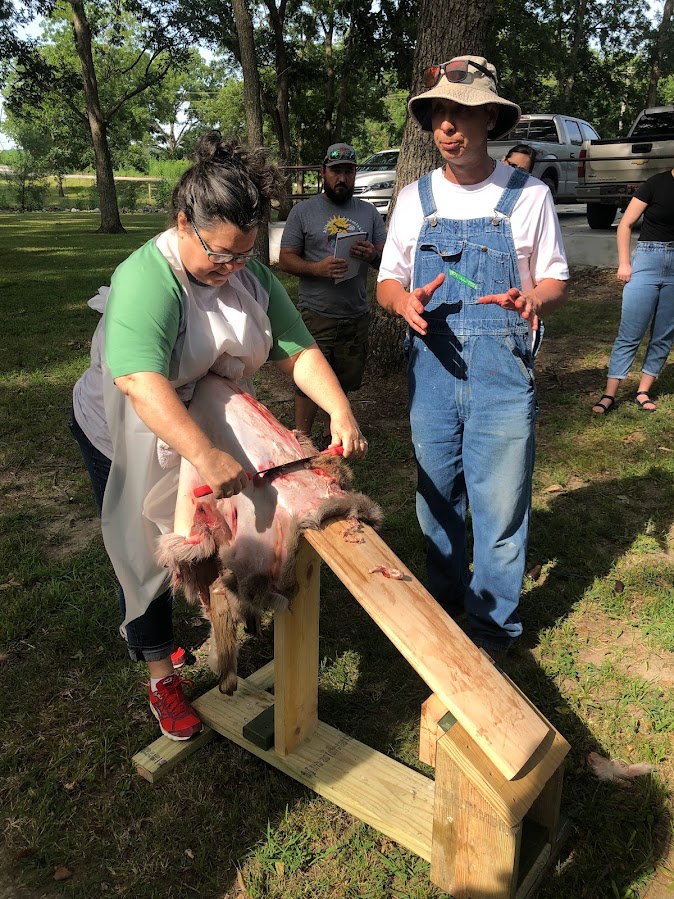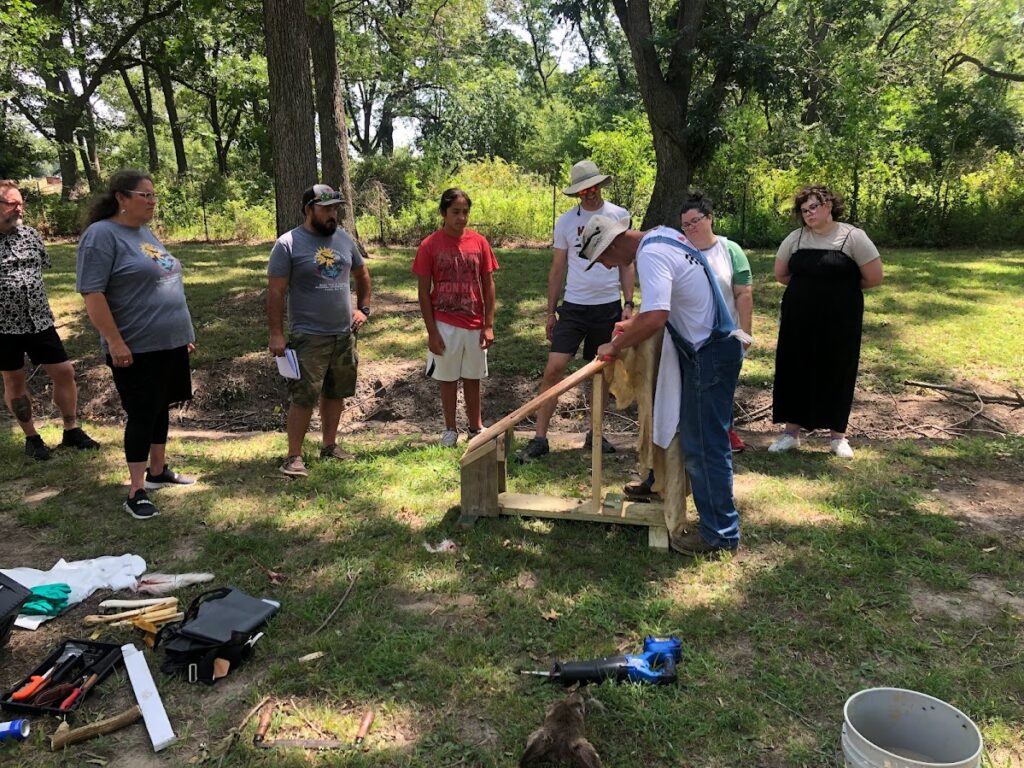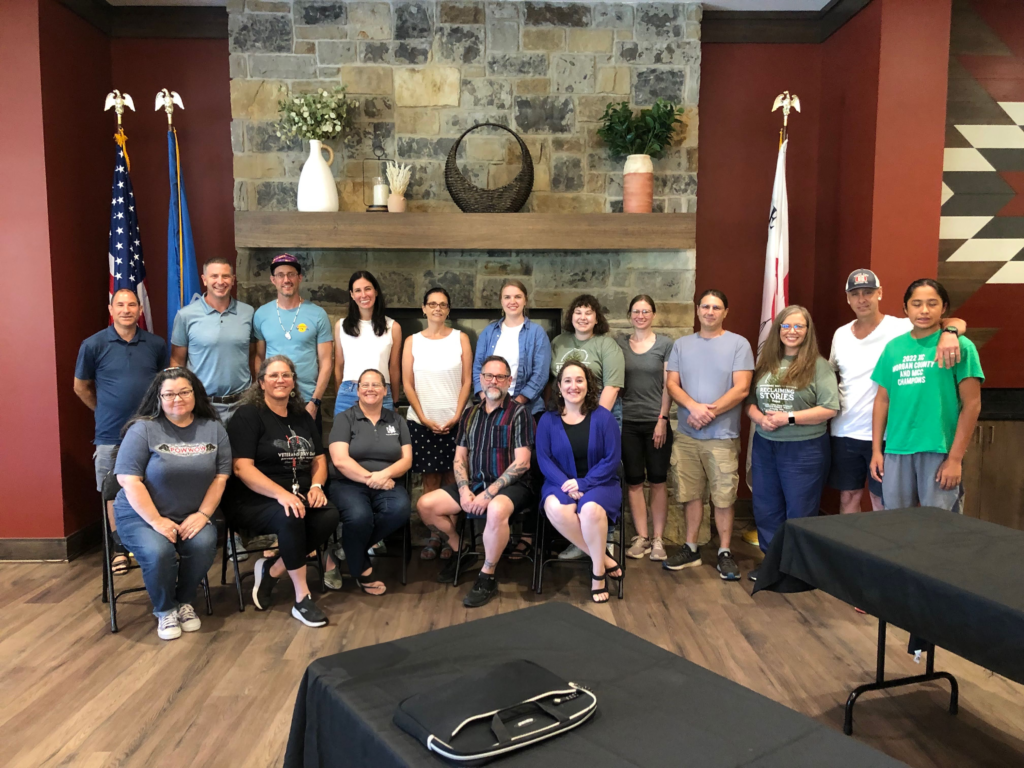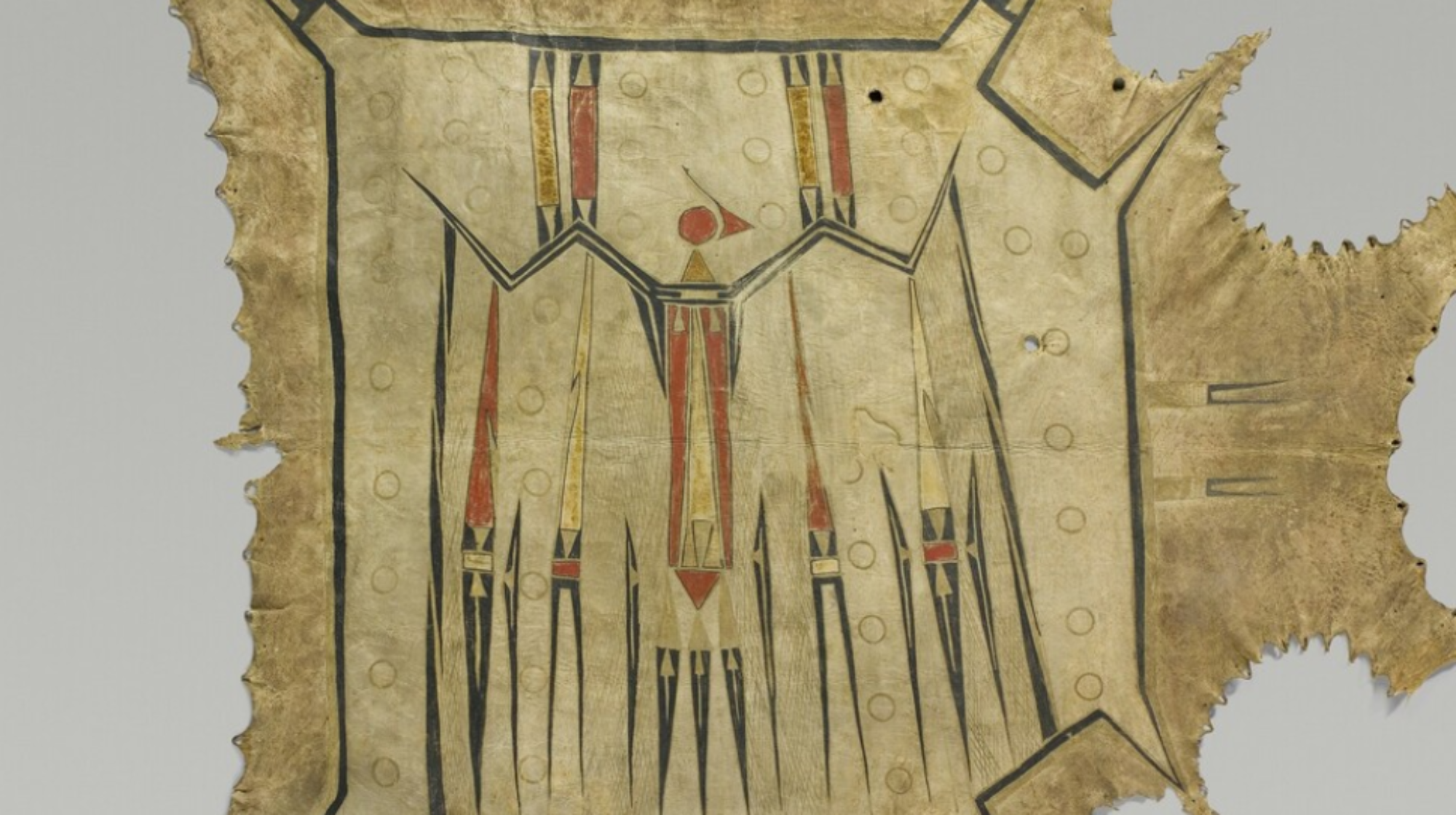Hide Tanning
As we study minohsayaki (painted hides) together, our group thinks a lot about very material questions: how did Myaamia and Peewaalia artists make painted hides long ago? In summer 2022, our first Learning Lab focused on techniques of painting and tattooing. Led by Michael Galban and Jamie Jacobs, our group spent several days learning how to derive the pigments, how to make the paint, how to apply it. We studied design elements and motifs common to different eastern American Indigenous painting and tattoo traditions. We learned how to sew up the painted hides we made into useful bags. For the first time in generations, Myaamia and Peewaalia people in summer 2022 were making minohsayaki again.

In summer 2023, we took a further step in this discovery, turning our attention to the skills and labor involved in creating hides themselves. Of course, from the very beginning of our research, members of our group have wanted to know more about hide tanning as an art in its own right. Summer 2023 was our chance to explore the process in depth over a three day workshop. It was an extraordinary experience, a chance to connect evolving community knowledge about the minohsayaki to the embodied work of traditional hide tanning.

Our guide was Jeremy Turner, Shawnee historian, maker, and expert whose gifts as a teacher are hard to overstate. Throughout our three days together in Miami, Jeremy led our group through practically the entire process of brain tanning a deer hide. From dehairing to stretching to beaming, we worked together in the heat (with occasional needed trips into the air conditioning at the Myaamia Maker Space!) to produce a finished hide.




The lessons were amazing. What many of us had only ever read about came to life in this communal experience, with all of its messy and complex physicality. One constant refrain throughout the process was an appreciation for just how much work this was, and how much know-how Jeremy shared, much of which he could only summarize.

In addition to these hands-on sessions, we also continued our group study. Historian Coll Thrush facilitated a discussion about Indigenous travelers in London, helping us think about Paris as an Indigenous place today and notably in 1725 when a group of travelers from the Illinois Country spent a couple of weeks in that city. We discussed museum work and reunions with heather ahtone, curator of the “Winiko” exhibit at First Americans Museum. And with Brooke Bauer we discussed gender and hide tanning in 18th century Indigenous cultures of eastern North America.

It was an extraordinary new chapter in our larger project, and an unforgettable experience.
